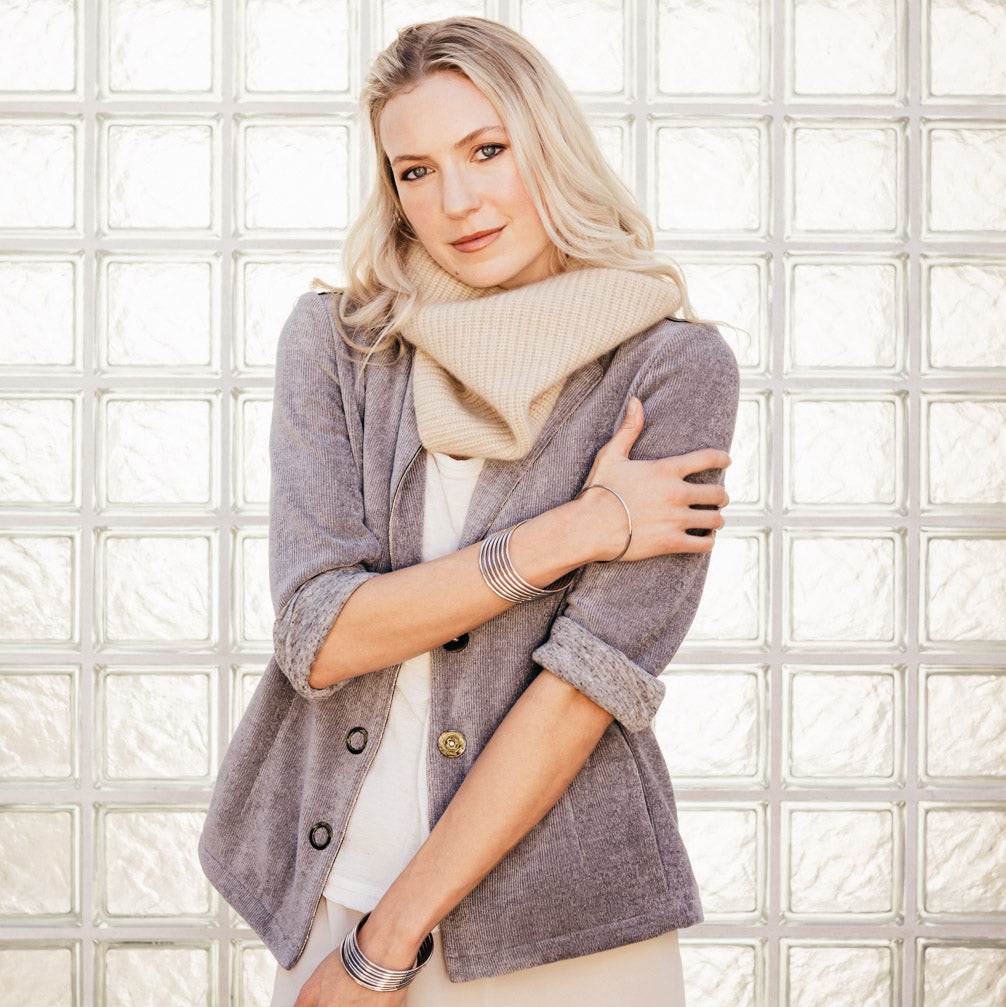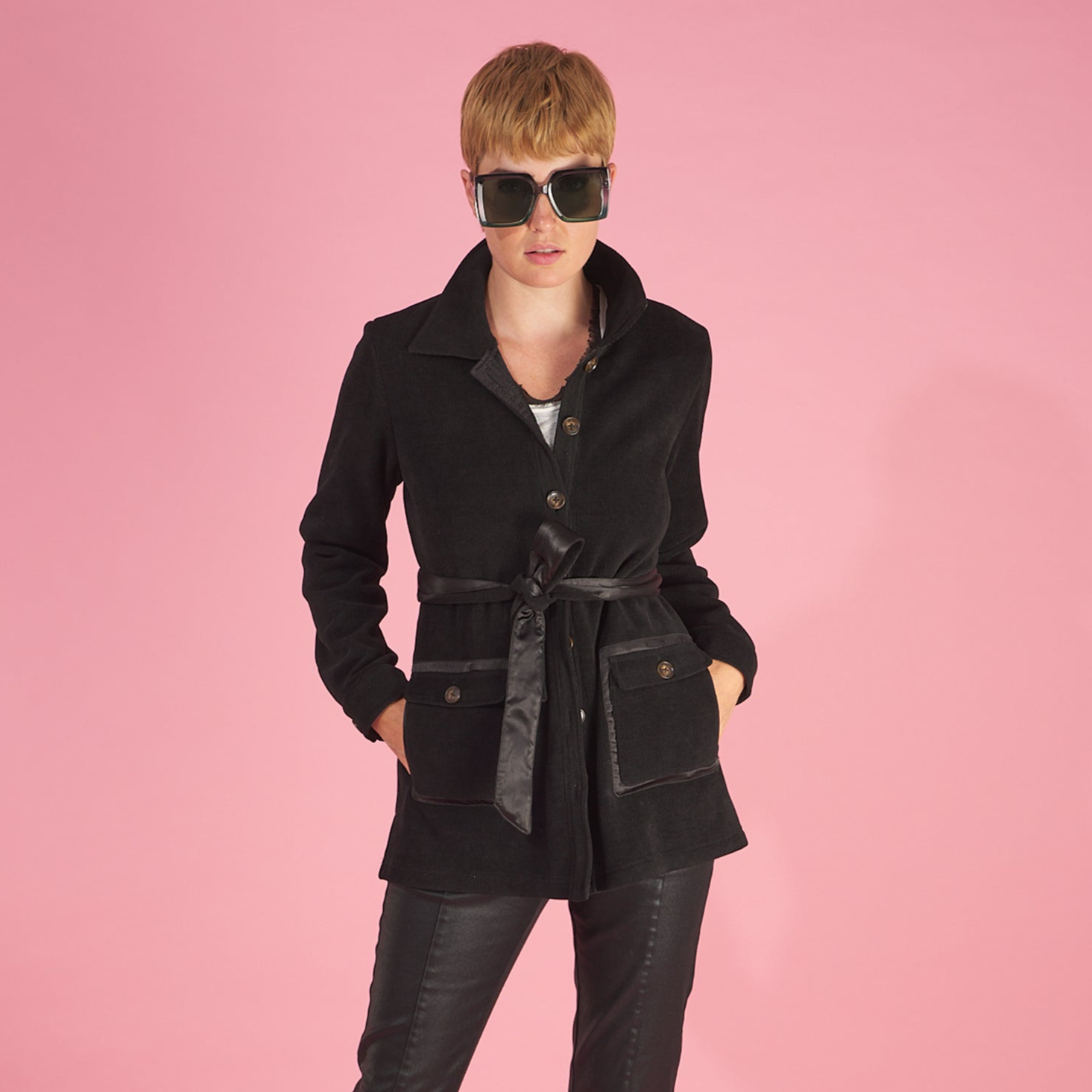
Blended 2.0
Blended. It’s increasingly common in the fashion industry, but what does a blend offer that individual fabric compositions don’t? Take a quick glance at the tag of one of your most high-quality pieces. Chances are, you will see a list of multiple fabrics, both synthetic and natural. While you may think that garments with just one fabric are of superior quality, blended fabrics offer a surprising amount of benefits.
Natural Fibers vs Synthetic Fibers
Natural fibers are exactly that - natural. These fibers are collected from plants or animals and then made into beautiful pieces of fabric. Common natural fibers include silk, cotton, cashmere, sheep and alpaca wool, hemp, and linen.
Synthetic fibers are the opposite of natural fibers. They are manmade through a process called polymerization. This process requires high amounts of energy and begins with natural gas, coal, and oil. A few of the most popular synthetic fibers include polyester, nylon, spandex, and anything that is considered “wrinkle-free” or “stain-resistant.”
Fabric can also be made from semi-synthetic fibers. These fibers are derived from natural sources through a chemical process. The fiber is harvested, most often from plants, broken down, and then reconstructed. Common semi-synthetic fibers include rayon, viscose, modal, and lyocell.
Benefits of Blended Fabrics
It may sound better to have a garment made entirely of a single type of fiber, but it’s actually more beneficial to blend fibers together. Each fiber has its own unique properties that offer both advantages and disadvantages, but blending fibers can allow you to reap their benefits while omitting their flaws.
A great example of a blended fabric exerting positive qualities is the common blend of cotton and polyester. As a natural fiber, cotton is breathable and comfortable, but is prone to shrinking and wrinkles. On the other hand, polyester is wrinkle-resistant and great at retaining its original shape and a product that will last. With a cotton and polyester blend, you can take advantage of the breathability of cotton without worrying about shrinking or excessive wrinkles.
Why We Use Blended Fabrics
Here at (IN)LARKIN, we utilize blends for a few reasons.
One, we can create chic garments that offer comfort through hours of wear. By blending performance fabrics with tailored cuts of high fashion, you no longer have to suffer through uncomfortable and itchy fabrics to achieve high style.
Two, we can offer high-quality designer garments to our customers without the pricing of high-fashion. Many single-fiber fabrics are expensive to produce, and therefore expensive to purchase and will not last as long. With blending fabrics, we can start to cut that cost down for both us and provide you with designer product at a fraction of the price.
Lastly, blending fibers allows us to manipulate a garment exactly how we want it to. Since our entire brand is focused on using comfortable luxury fabric for tailored garments, we need the perfect blends to make this focus a reality.
(IN)LARKIN Blends
As we’ve mentioned previously, the fabrics we utilize in our garments are not created by us. In order to limit the amount of waste we are contributing, we only use already created fabrics that we can purchase large quantities of. While this does significantly limit our fabric options, we are still able to produce high-quality garments with fantastic fiber blends.
Cotton, Polyester, Elastane
This combination of three common fibers is one of the most used in the fashion industry. The cotton fibers help increase absorbency and wick sweat, with an additional comfort aspect. By combining these cotton fibers with polyester, you get a better wash and wear from your garments as well as wrinkle resistance and shape retention. By adding elastane, your garment stretches with you, and comfort is increased. One of the best examples of this blend in (IN)LARKIN is the (UN)REAL Jean. This fiber blend combination produces a jean that both stretches with you and holds its shape throughout wear and feels like pajamas. The addition of cotton offers breathability and extra comfort.
Mercerized Merino, Cashmere
Mercerized merino wool offers a superior feel and improved comfort than other denser wools. It also is thin and lightweight with a wonderful drape and fluidity, much like the cashmere it’s combined with. On the other hand, cashmere is close to 8 times more insulating than traditional sheep’s wool, but it's extremely lightweight and elegant. It’s also wrinkle-resistant, moisture wicking, and does not scratch the skin as wool does. Since cashmere is so sought after and expensive, combining it with a similar fabric like mercerized wool can create an attainable garment with just as much luxury as one that’s 100% cashmere, much like our Cashmere Blend Joggers.
Wool, Polyester, Nylon, Alpaca
The main fiber in the Herringbone Blazer and the Wool Bomber Jacket is wool, which adds warmth and bulk for those cold winter months. Wool coupled with polyester offers an extra additive of retaining shape and stopping excessive wrinkles. Nylon is added for an easier wash and durable structure, something that outerwear definitely needs. The final fiber is alpaca, which offers hypoallergenic properties for those who may be allergic to traditional sheep’s wool. Alpaca is also flame-resistant, biodegradable, and naturally water-resistant, making it a great option for outwear.
Shop (IN)LARKIN
When you start to understand what blended fabrics can do for your clothes, you can begin to make decisions based on your needs. Our goal is to not only sell you high-quality garments that will last and perform but educate you about your wardrobe’s needs. We strive to be as sustainable as possible as a small business, and you can read about our commitment to limiting textile waste in a previous style blog.
Still on the hunt for the perfect holiday gift? We have so many beautiful pieces for the women in your life.





